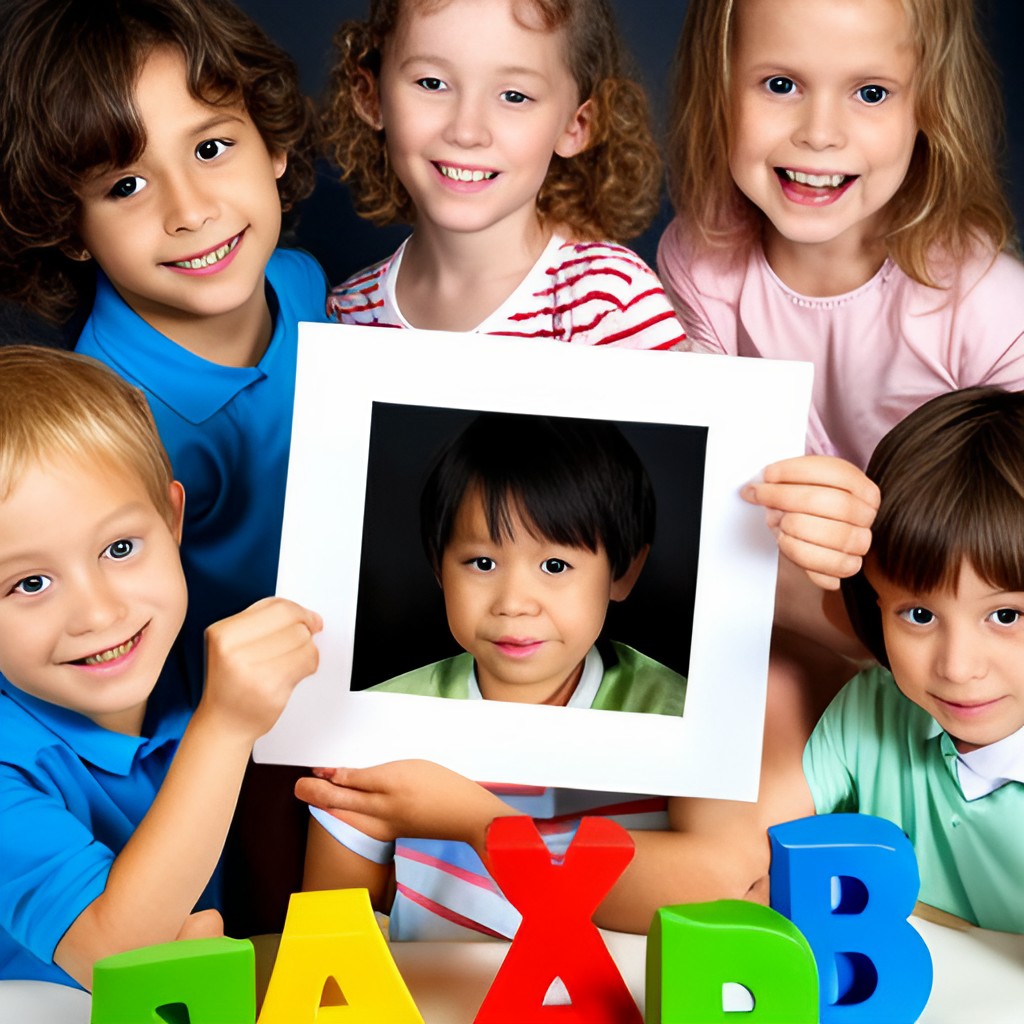
Unlocking the Secrets of Spelling With Fun and Engaging Activities for Kindergarteners
Teaching spelling to kindergarten kids is an important step in their literacy development. By implementing scientifically proven methods, parents can ensure their children develop strong spelling skills from an early age. In this comprehensive guide, we will explore detailed strategies and techniques to make spelling instruction engaging and effective for young learners. Let’s dive in!
Phonics-Based Instruction Phonics serves as a foundation for spelling. It teaches children the sounds associated with each letter and helps them understand the relationship between sounds and letters. Here’s a step-by-step approach to phonics-based instruction:
- Teach Letter Sounds: Introduce the alphabet and their corresponding sounds through interactive activities. Use visual aids, such as flashcards or alphabet charts, to associate letters with their sounds.
- Letter-Sound Correspondence: Help children understand how letters combine to form words. Practice letter blending by sounding out simple words together.
- Introduce Phonetic Patterns: Teach common phonetic patterns, such as short vowel sounds (e.g., “a,” “e,” “i,” “o,” “u”) and consonant blends (e.g., “bl,” “st,” “fr”). Provide examples and encourage children to identify these patterns in words.
- Word Building Activities: Engage children in hands-on activities to build words using magnetic letters, letter tiles, or interactive phonics apps. Encourage them to blend individual sounds together to form complete words.

Multisensory Techniques Incorporating multiple senses during spelling instruction enhances children’s learning experience. Here are some multisensory techniques to consider:
- Tactile Activities: Use materials like sandpaper letters or textured surfaces to allow children to trace letters and feel their shapes. This tactile experience helps reinforce letter formation and recognition.
- Kinesthetic Actions: Combine movement with spelling practice. Have children jump, clap, or stomp for each letter or sound they say aloud. This physical engagement promotes memory retention and makes learning enjoyable.
- Visual Cues: Display word walls or anchor charts with high-frequency words or commonly misspelled words. Encourage children to refer to these visual aids during writing activities, reinforcing correct spelling.
- Spelling with Art: Integrate art activities with spelling. Have children create letter collages using magazine cut-outs or form words using clay or playdough. This creative approach makes spelling engaging and memorable.
Word Chunking and Word Families Breaking words into smaller chunks or word families helps children understand spelling patterns. Follow these steps for effective word chunking:
- Identify Word Families: Introduce word families, such as the “at” family (“cat,” “bat,” “hat”). Help children recognize the shared sound and pattern within these words.
- Practice Word Families: Engage children in word-building activities using word family cards or interactive apps. Encourage them to create new words by substituting initial or ending sounds.
- Blend Word Chunks: Teach children how to blend word chunks together to form complete words. For example, blend “c” and “at” to form “cat.”
- Rhyming Words: Explore rhyming words to reinforce spelling patterns. Encourage children to identify words that rhyme with target words, expanding their vocabulary and spelling repertoire.
Spelling Games and Interactive Tools (continued)
- Spelling Apps: Utilize educational apps like Spelling City or ABCmouse that offer interactive spelling games and activities. These apps provide immediate feedback and progress tracking, making learning fun and engaging
2. Online Spelling Games: Explore online platforms that offer a wide range of spelling games suitable for kindergarten kids. Websites like Education.com and Funbrain.com provide interactive and age-appropriate spelling games that make learning enjoyable.
- Word Scramble: Create word scramble activities where children rearrange jumbled letters to form correct spelling words. This game enhances problem-solving skills and reinforces letter sequencing.
- Spelling Bee: Organize a mini-spelling bee at home or within a small group of friends. Children take turns spelling words aloud, promoting confidence in spelling and public speaking.
- Word Bingo: Create customized word bingo cards with spelling words or word families. Children can mark off the words as they are called out, reinforcing recognition and spelling skills.
Contextual Learning and Real-Life Applications Making spelling relevant and applicable to everyday situations enhances children’s understanding and retention. Try the following strategies:
- Word in Context: Help children understand the meaning and usage of spelling words by incorporating them into sentences or short stories. Encourage them to create their own sentences using the words correctly.
- Environmental Print: Point out words in the environment, such as road signs, labels, or menus, and discuss their spelling. This real-life connection reinforces the importance of spelling accuracy.
- Writing Activities: Encourage children to practice spelling in their writing assignments. Provide opportunities for them to write letters, short stories, or journal entries using their spelling words. Offer guidance and constructive feedback to help them improve their spelling skills.
- Collaborative Projects: Engage children in collaborative projects where they research, write, and present information. This process involves spelling research terms, organizing ideas, and accurately conveying information, fostering spelling proficiency.

Positive Reinforcement and Motivation Maintaining a positive and supportive learning environment is crucial for children’s spelling success. Here’s how to motivate and reinforce their progress:
- Praise and Encouragement: Offer specific and sincere praise for their spelling efforts and improvements. Focus on their strengths and growth, building their self-confidence and enthusiasm for spelling.
- Rewards System: Implement a rewards system where children earn points or tokens for achieving spelling goals. Offer small incentives or privileges as they reach milestones, creating a sense of accomplishment and motivation.
- Celebrate Achievements: Recognize and celebrate significant spelling achievements, such as spelling bee participation or improvement in spelling test scores. This recognition reinforces their hard work and dedication.
- Spelling Challenges: Introduce occasional spelling challenges to keep children engaged and motivated. These can include timed spelling quizzes or spelling competitions with friends or siblings, adding an element of excitement and friendly competition.
Let’s summarize:
Teaching spelling to kindergarten kids requires a thoughtful and engaging approach. By incorporating phonics-based instruction, multisensory techniques, word chunking, spelling games, contextual learning, and positive reinforcement, parents can guide their children towards spelling success. Remember to adapt these strategies to suit your child’s learning style and provide ample practice opportunities. With patience, consistency, and a nurturing environment, your child will develop strong spelling skills and a lifelong love for language.





